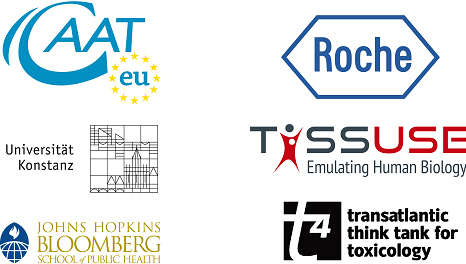Biology inspired microphysiological systems – status and future
A think tank of the Center for Alternatives to Animal Testing - Europe (CAAT-Europe), the Transatlantic Think Tank for Toxicology (t4), Hoffmann-La Roche, TissUse – Emulating Human Biology

Time: June 8th – June 10th 2015
Venue: SANA Hotel, Berlin, Germany
Outline: Animals are traditionally used for hazard identification, safety testing or disease modelling in pharmaceutical, (agro)chemical, food and environmental industry laboratories. Though in vivo tests give an insight into systemic effects of chemicals, the physiological differences between animals and man can undermine extrapolation of animal data to the human system. These problems are avoided by human-relevant in vitro systems that mimic human physiology and therefore allow plausible in vitro-in vivo extrapolation.
Static human 3D cell culture models mimic human biology at a more physiological level than traditionally used 2D cell cultures. They add value to predictive toxicology but still do not fully emulate systemic human biology in vitro. Recent advanced microfabrication techniques enable the development of microfluidic ‘organ-on-a-chip’ or even “human-on-a-chip” devices. These promise to emulate relevant aspects of single organ function and interaction among organs on a microphysiological scale, enabling a new level of physiologically relevant assays. It is still to be defined which level of in vitro human biology is required to cater for the different needs of industry in the field: Do we need single organs on a chip and, if yes, at which level of organ-specific complexity and for which test purpose? Do we need any systematic combination of organs on a chip, and if so, at what level of arrangement and interaction and for which application? Which benefits might organismal microphysiological systems provide for the predictive substance testing arena? The think tank will develop answers and recommendations along these questions. In addition, a roadmap to qualify and validate equipment and assays in the field will be discussed and suggested by the experts.
